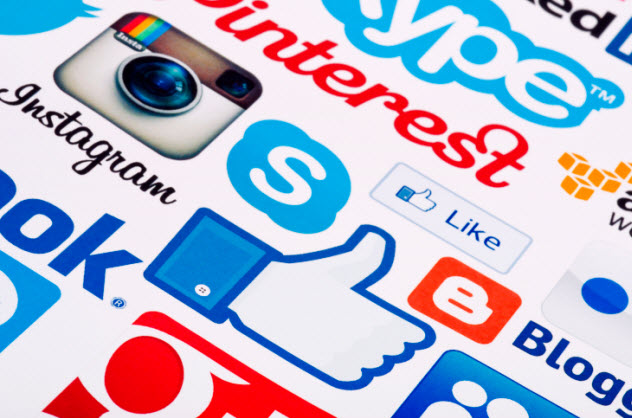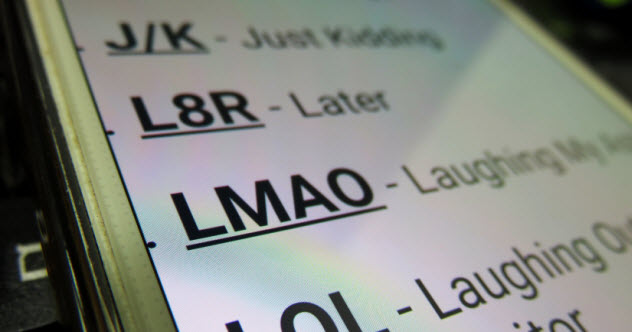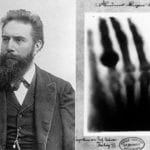 Weird Stuff
Weird Stuff  Weird Stuff
Weird Stuff  Our World
Our World 10 Ways Your Christmas Tree Is More Lit Than You Think
 Movies and TV
Movies and TV The 10 Coolest Stars to Set Sail on The Love Boat
 History
History 10 Things You Didn’t Know About the American National Anthem
 Technology
Technology Top 10 Everyday Tech Buzzwords That Hide a Darker Past
 Humans
Humans 10 Everyday Human Behaviors That Are Actually Survival Instincts
 Animals
Animals 10 Animals That Humiliated and Harmed Historical Leaders
 History
History 10 Most Influential Protests in Modern History
 Creepy
Creepy 10 More Representations of Death from Myth, Legend, and Folktale
 Technology
Technology 10 Scientific Breakthroughs of 2025 That’ll Change Everything
 Weird Stuff
Weird Stuff Ten Bizarre Facts About The Doge Meme
 Our World
Our World 10 Ways Your Christmas Tree Is More Lit Than You Think
 Movies and TV
Movies and TV The 10 Coolest Stars to Set Sail on The Love Boat
Who's Behind Listverse?

Jamie Frater
Head Editor
Jamie founded Listverse due to an insatiable desire to share fascinating, obscure, and bizarre facts. He has been a guest speaker on numerous national radio and television stations and is a five time published author.
More About Us History
History 10 Things You Didn’t Know About the American National Anthem
 Technology
Technology Top 10 Everyday Tech Buzzwords That Hide a Darker Past
 Humans
Humans 10 Everyday Human Behaviors That Are Actually Survival Instincts
 Animals
Animals 10 Animals That Humiliated and Harmed Historical Leaders
 History
History 10 Most Influential Protests in Modern History
 Creepy
Creepy 10 More Representations of Death from Myth, Legend, and Folktale
 Technology
Technology 10 Scientific Breakthroughs of 2025 That’ll Change Everything
10 Modern Inventions That Are Older Than We Think
Many modern inventions have actually been around in one form or another for decades or even centuries. We tend to think these things are new because the earlier versions were either failures, forgotten, or lost.
10 Reality-Based Television Shows
In the early 1970s, filmmaker Craig Gilbert approached Santa Barbara housewife Pat Loud about having a camera crew film her family’s daily life for a TV show. At first, Pat rejected Craig’s idea because participating in the show might strip her family of their privacy and disrupt their daily lives. Eventually, though, Pat changed her mind, seeing the show as an opportunity to restore happiness to her life. The first reality show ever made, it was called An American Family.
The series aired on PBS in 1973 and chronicled seven months in the day-to-day lives of Pat Loud, her husband, Bill, and their five children, who ranged in age from 14 to 20. An American Family marked a turning point in television history because it broke the traditional boundaries of how an average American family was viewed. It featured Pat and Bill’s divorce and shocked the audience when oldest son Lance admitted he was gay. In fact, Lance was the first continuing gay character on TV.
The series was quite popular when it aired because the audience was fascinated with the unscripted demise of the family. The show drew an average of 10 million viewers per week.
9 Contact Lenses

Though seen as a modern phenomenon, the general idea for contact lenses was first envisioned by Leonardo da Vinci in 1508. Da Vinci believed that the optics of the human eye could be corrected by placing the cornea in direct contact with water. However, it would be another 350 years before someone actually invented the first contact lens.
According to some reports, German glassblower F.A. Muller should be credited with producing the first contact lenses in 1887. However, other reports cite Paris optician Edouard Kalt and Swiss physician Adolf E. Fick as the creators of the first contact lenses in 1888. These early contact lenses were made entirely from glass. They covered the entire surface of the eye, including the sclera (the white part). The lenses were heavy and reduced the supply of oxygen to the cornea, so they could only be worn for a few hours at a time.
New York optometrist William Feinbloom invented scleral lenses in 1936. These lenses were made from a combination of glass and plastic and were noticeably lighter than earlier models. But it wasn’t until 1948 that California optician Kevin Tuohy introduced a prototype of modern contact lenses, which were made entirely from plastic and covered only the corneas.
8 Fast Food Restaurants

The habit of eating on the run is believed to be the invention of recent generations. However, when scientists were studying how households functioned in the ancient city of Pompeii, they discovered that fast food restaurants were used by the ancient Romans.
The average ancient Roman did not wine and dine without restraint like the elites in Rome. Most of the population lived in small quarters with no space for formal dining and kitchen areas. In many Pompeii homes, there was a total absence of formal dishware. While excavating the city, scientists discovered remains of fast food restaurants instead.
According to Professor Stephen Dyson, a former president of the Archaeological Institute of America, the restaurants were a cross between modern fast food eateries and pubs because they served both food and alcohol. Opened to the streets, these restaurants had a big counter in the middle of the room from which food and drinks were ordered and served. Like modern eateries, customers might sit at a little table in the eatery or simply grab the food and go. Findings in Pompeii are usually believed to extend to other parts of Italy because the city was physically close to the capital, Rome.
7 Social Media

Social media appears to be one of the biggest innovations of the 21st century. On it, we share our thoughts and opinions on various issues. However, the 16th-century inhabitants of Northern Europe may have beat us to it when they created alba amicorum, which is Latin for “friend books.”
Around the 1560s, young men from the areas we now call the Netherlands and the Rhineland began leaving home in search of a broader education throughout Europe. These men visited universities and scholars. Whenever they met philosophers, scientists, or students they admired, they’d have these people write a short comment in their “friend book” to commemorate their meeting. Sometimes, artists were also employed to draw illustrations in the book.
Although the ladies of that era were not given the same travel opportunities as men, they also kept their version of a “friend book.” The female version tended to be more personal—filled with gossip, secrets, and inside jokes about their romantic interests. These books often contained tales of memorable events, lyrics to new songs, and personal poetry. The women’s books were passed from one friend to another to jot down their thoughts, names, and sayings. An alba amicorum was definitely a way to show how popular someone was.
6 Brain Surgery

According to archaeologists, brain surgery has been practiced since the late Neolithic period. Originally believed to date back about 5,000 years, the earliest known technique is trepanation, the removal of bone from the skull. However, an ancient grave discovered in the French village of Ensisheim suggests that brain surgery was practiced at least 7,000 years ago.
In 1997, archaeologists working in Ensisheim discovered the remains of a 50-year-old man with two holes in his skull. Examinations of the skull revealed that neither hole had a crack, which indicated surgery (rather than violence) as the cause.
Located in the frontal lobe, the first hole was about 6 centimeters (3 in) wide, while the other hole at the top of the skull was 3 centimeters (1 in) wide. Examinations showed that the surgeries took place at different times. The surgeries must have been successful because both holes healed before the man died. The smaller hole was totally covered by a new layer of bone, and the bigger one was partially covered.
Although that’s the oldest known evidence of brain surgery, archaeologists believe there are probably even earlier examples of brain surgery. The fact that the trepanation was executed so perfectly and the man survived both operations suggests that the surgeon knew what he was doing. The technique had probably been passed down from earlier generations and practiced to perfection.
5 The Telephone

We recently told you how the invention of the telephone was wrongly attributed to Alexander Graham Bell when the real inventor was an Italian-American engineer named Antonio Meucci. However, the idea of a telephone actually dates back to over 1,200 years ago.
This ancient version was invented by the Chimu civilization, who lived in the Rio Moche Valley in northern Peru. They are believed to be the first engineering society in the New World. Currently located at the Smithsonian’s National Museum of the American Indian, this ancient telephone was discovered by Baron Walram V. Von Schoeler, a Prussian aristocrat, while excavating in Peru in the 1930s.
The Chimu culture’s phone consisted of two gourd receivers, each about 9 centimeters (4 in) long, connected by about 22 meters (75 ft) of twine cord. The gourd receivers were equipped with hidden membranes designed to boost the sound during communication. The Chimu society is believed to have been a hierarchical society in which the telephone was used by the elites who were not allowed to have face-to-face communication with the lower class.
4 Automobiles

Although some call Karl Benz the “father of the automobile,” this invention can’t be attributed to just one person. It took about 100,000 patents to create the cars we have today. The likes of Leonardo da Vinci and Isaac Newton even drew theoretical plans for a motor vehicle. However, it wasn’t until the 18th century that we had the first self-propelled vehicle for human travel.
In 1769, Nicolas-Joseph Cugnot, a French engineer and mechanic, became the first person to design and construct a self-propelled vehicle. Used by the French military, it was a tricycle powered by a steam engine that carried artillery at a top speed of 3 kilometers per hour (2 mph). Cugnot’s vehicle had to stop about every 15 minutes to build up enough power to move again.
In 1771, the first automobile accident occurred when a man drove the vehicle into a stone wall. From then on, things spiraled down for Cugnot. He soon ran out of money to enhance his invention after one of his financial backers died.
To put that into perspective, the automobile was invented before the American revolution, and the first automobile accident occurred almost two decades before the French revolution.
3 Anti-Vaccination Movement

The earliest known anti-vaccination movement dates back to the first use of a vaccine. In the early 1800s, Edward Jenner developed the cowpox vaccine, but it was met with public outcry and criticism. Some critics cited sanitary reasons while others were against it for political, religious, or scientific reasons.
Almost a century later, riots broke out in various parts of Britain after the British government passed a law making vaccination compulsory for all children. Prominent Victorian-era scientists such as Alfred Russel Wallace threw their support behind the anti-vaxers. Wallace quoted statistics from a report by the Registrar-General that 52 people died annually due to complications from vaccination.
However, the National Vaccine Establishment quickly countered with a statistic that almost 4,000 London residents died annually from smallpox before vaccinations were introduced. Due to the riots and political pressure, the British government added a clause to the law that allowed parents to opt out of compulsory vaccination if they clearly understood the implications of their actions.
In 1867, the Anti-Compulsory Vaccination League was established in London. About a decade later, the Anti-Vaccination Society of America was founded after a visit to America by prominent British anti-vaxer William Tebb.
2 Submarines

Most of us associate the invention of the submarine with World War I. However, the first workable description of a submersible ship was drawn up by William Bourne, an English innkeeper, in 1580. Bourne offered an explanation for why ships float and suggested that increasing or decreasing the density of a ship relative to the weight of the water it displaces would cause a ship to sink or float.
However, Bourne didn’t do anything more with his idea, so the world had to wait until the 1620s for Cornelius van Drebbel, “court inventor” for James I of England, to build the first submarine. Although there were various accounts by people who saw Drebbel’s submarine stay submerged 5 meters (15 ft) deep in the Thames River for three hours, there were no credible drawings or explanations of how it worked.
Drebbel’s submarine was a wooden rowboat wrapped tightly in waterproofed leather. It had air tubes attached to floats that reached the surface for oxygen. The submarine was propelled by 12 oarsmen because engines didn’t exist yet.
The first military submarine was built by David Bushnell in 1776. Known as the “Turtle,” Bushnell’s submarine was wooden. It was driven by hand-turned propellers. During the American Revolution, the Turtle was used to attach explosives to the hulls of British warships. Although the submarine functioned well, the explosives didn’t.
In the 1890s, the first true submarines were developed by two rival inventors. Built by John P. Holland and Simon Lake for the US and Russia, respectively, these submarines used steam engines and petrol for surface travel and electric motors for underwater cruising.
1 Text Message Slang

Text message slang is supposedly a modern invention. Today’s phone users adopted this slang to make their messages shorter and their typing faster. Known in the English language as “text lingo,” this form of writing has been criticized by English professors and language purists who feel it is an indication of modern intellectual decay. However, abbreviated communication language has been around since the 1890s when the telegraph was invented.
Although the telegraph afforded people the opportunity to send messages over vast distances, it was extremely expensive because people had to pay per letter. Users began adopting text lingos called the “telegram style” to minimize the cost of sending messages. The Sunday Magazine wrote that a “salutation may be accompanied by an inquiry by one as to the health of the other, which would be expressed thus: ‘Hw r u ts mng?’ And the answer would be: ‘I’m pty wl; hw r u?’ or ‘I’m nt flg vy wl; fraid I’ve gt t mlaria.’ ”
As most people only sent messages by telegraph when they needed to convey urgent messages, the telegram style provided them the chance to pack as much information as possible into the smallest number of letters.








